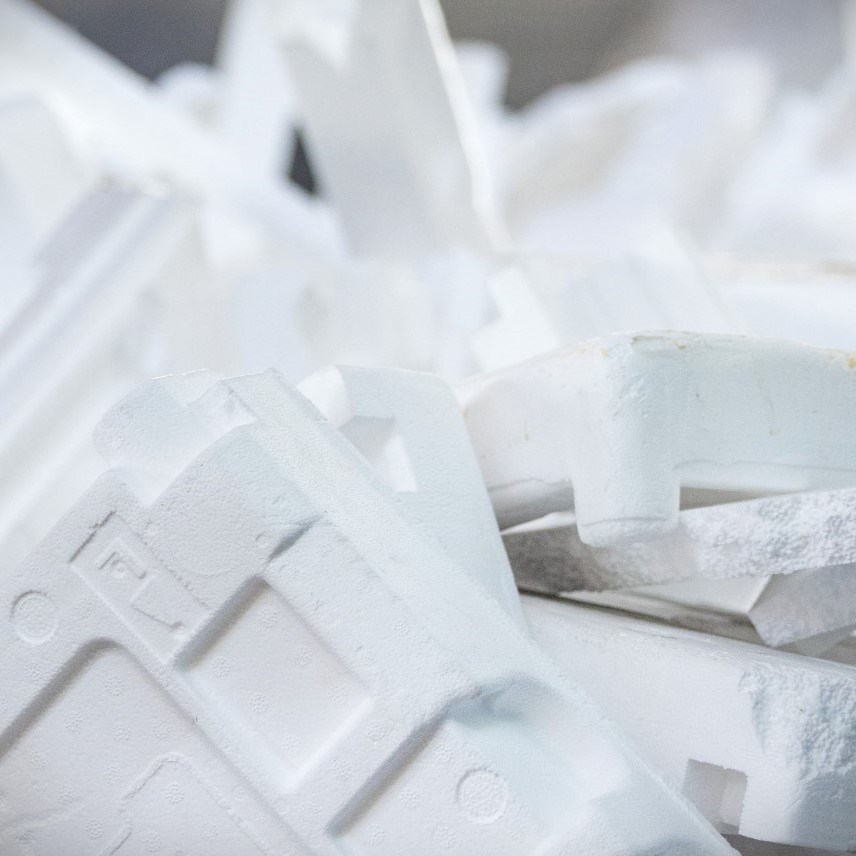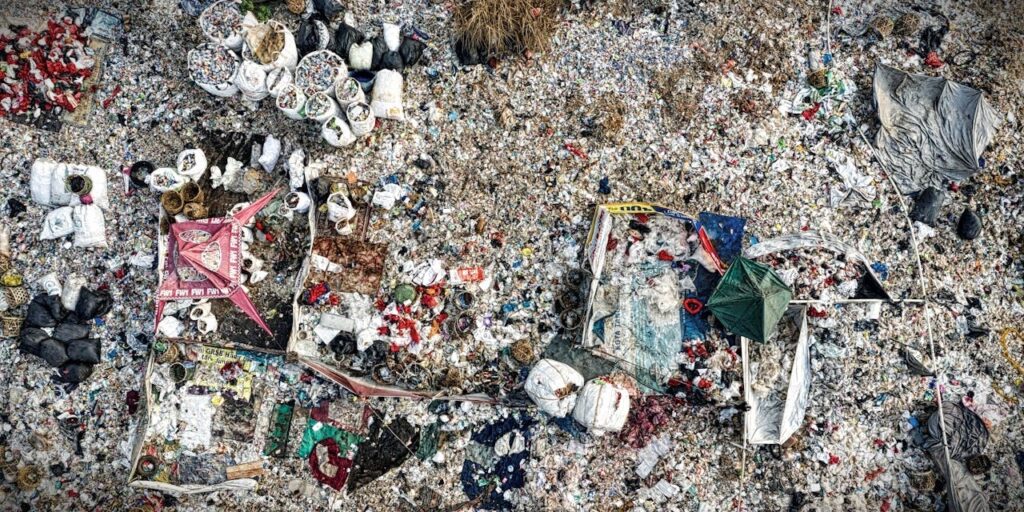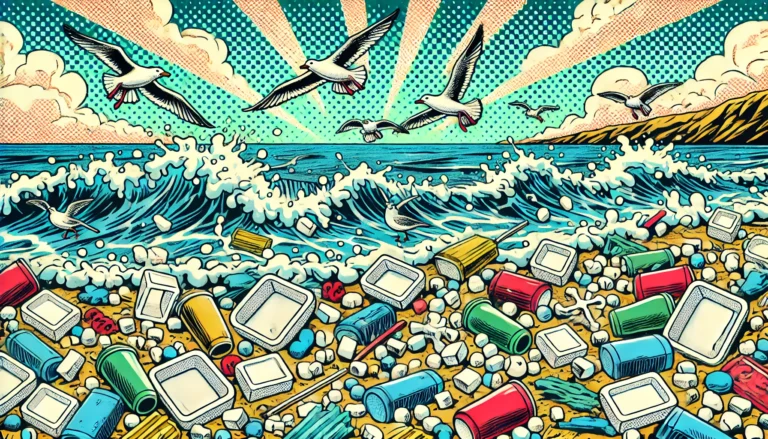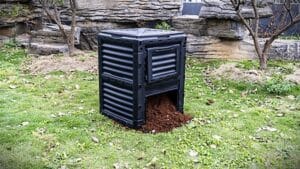Table of contents
- Introduction: The Harmful Environmental Impact of Styrofoam
- What is Styrofoam and Why is it So Common?
- Is Styrofoam Bad for the Environment? The Hidden Costs of EPS Pollution
- Styrofoam Pollution: Causes, Impact, and Solutions
- Does Styrofoam Decompose? The Truth About Its Environmental Impact
- Styrofoam vs. Plastic: Which is Worse for the Environment?
- Is Styrofoam Toxic? Understanding the Health Risks of Exposure
- Styrofoam Waste Management: How to Reduce Its Environmental Impact
- Best Alternatives to Styrofoam Packaging: Sustainable & Eco-Friendly Solutions
- How to Reduce Styrofoam Waste: Practical Solutions for Individuals and Businesses
- Conclusion: Taking Action Against Styrofoam Pollution
Introduction: The Harmful Environmental Impact of Styrofoam
Styrofoam pollution, also known as Expanded Polystyrene (EPS) pollution, is everywhere—from takeout containers to shipping boxes. But while it’s convenient, its environmental impact is alarming. It is commonly found in packaging, food containers and insulation.

Why is Styrofoam Bad for the Environment?
Despite its widespread use, Styrofoam comes with major environmental downsides:
- Non-biodegradable – Remains in the environment for centuries without breaking down.
- Difficult to recycle – Most recycling centers won’t accept it because it’s expensive to process and easily contaminated.
- Major contributor to plastic pollution – Frequently pollutes oceans, landfills, and urban areas.
Environmental Impact
- Waste buildup – Styrofoam fills landfills and disrupts natural habitats.
- Threat to wildlife – Wildlife often mistakes Styrofoam for food, which can cause choking, internal blockages, and long-term health issues.
- Microplastic contamination – Breaks into tiny particles that persist for centuries and infiltrate the food chain.
Why It Matters
Understanding the damage Styrofoam causes helps us make better choices, cut back on its use, and switch to greener alternatives. Looking for eco-friendly ways to reduce plastic waste? Check out our guide on how to store fresh produce in the UK without plastic for sustainable storage solutions!
What is Styrofoam and Why is it So Common?
Styrofoam, or Expanded Polystyrene (EPS), is a lightweight and durable plastic commonly used in packaging, insulation, and disposable food containers. Its affordability and insulating properties make it one of the most widely used materials in industries worldwide. Manufacturers produce Styrofoam by expanding polystyrene, a petroleum-based plastic, using gas expansion techniques to create a foam-like structure with insulating properties.
Types of Styrofoam: Properties and Applications
There are two main types of Styrofoam, each with unique properties and applications:
- Expanded Polystyrene (EPS): Commonly used for food packaging, cups, and protective shipping materials. It is lightweight and composed of tiny polystyrene beads fused together.
- Extruded Polystyrene (XPS): Denser and more moisture-resistant than EPS, often used in insulation boards and construction applications.
How is Styrofoam Manufactured?
The Styrofoam manufacturing process involves several key stages:
- Polymerization – Styrene monomers are chemically bonded to create polystyrene.
- Expansion – The polystyrene beads are treated with heat and a blowing agent (such as pentane) to expand them into foam.
- Molding and Shaping – Expanded beads are molded into various forms, including cups, plates, and insulation boards.
How is Styrofoam Used Across Industries?
Many industries rely on Styrofoam for its affordability and excellent insulation properties:
- Food and beverage containers – Takeout boxes, coffee cups, and trays.
- Packaging materials – Cushioning for electronics, appliances, and fragile goods.
- Construction – Insulation panels, roofing materials, and foundation boards.
- Medical applications – Transporting temperature-sensitive medications and vaccines.
While Styrofoam is widely used due to its benefits, its environmental impact raises serious concerns. The next sections will explore these challenges and potential solutions in depth.
Is Styrofoam Bad for the Environment? The Hidden Costs of EPS Pollution
Styrofoam, or Expanded Polystyrene (EPS), is everywhere—from takeout containers to shipping materials. It’s cheap, lightweight, and great for insulation, but when it comes to the environment, it’s a disaster. Styrofoam pollution is a major problem, making waste management harder, increasing pollution, and endangering ecosystems and human health.
Why is Styrofoam So Harmful to the Environment?
- Non-Biodegradable Waste – Styrofoam doesn’t decompose naturally. Instead, it lingers in landfills and the environment for over 500 years.
- Difficult to Recycle – It’s lightweight and easily contaminated by food, making recycling impractical and expensive.
- Microplastic Pollution – Over time, Styrofoam breaks into microplastics, which contaminate soil, waterways, and marine life, contributing to the global plastic crisis.
- Harmful to Wildlife – Birds, fish, and other animals mistake Styrofoam for food, leading to ingestion, choking, and starvation.
- Chemical Leaching – Styrofoam contains toxic chemicals like styrene and benzene, which can seep into soil and water, posing health risks to humans and animals alike.
How Styrofoam Contributes to the Global Plastic Crisis
- Fills up landfills – Styrofoam takes up massive amounts of space and doesn’t break down.
- Spreads easily – Wind and water carry it into streets, rivers, and oceans, where it accumulates.
- Harms marine life – Styrofoam worsens ocean plastic pollution, affecting aquatic ecosystems and marine animals.
Health Risks of Styrofoam Exposure
- Production Hazards – Manufacturing Styrofoam releases pollutants that lower air quality and harm workers.
- Food Safety Risks – When heated, Styrofoam can release toxic chemicals into food and drinks.
- Long-Term Exposure – Styrene, a key component, is classified as a possible human carcinogen by health organizations.

Styrofoam Pollution: Causes, Impact, and Solutions
Styrofoam pollution is a growing global crisis, contaminating ecosystems, harming wildlife, and posing serious health risks. Because it doesn’t break down naturally, Styrofoam is one of the biggest contributors to plastic waste, clogging landfills, polluting waterways, and disrupting ecosystems.
How Styrofoam Pollution Spreads and Accumulates
- Carried by Wind and Water – Styrofoam’s lightweight nature makes it easy to be carried by wind and water, spreading across cities, rivers, and oceans.
- Overloaded Landfills – With few recycling options, most Styrofoam waste ends up in landfills, where it takes centuries to degrade.
- Breaks into Microplastics – Instead of decomposing, Styrofoam fragments into tiny microplastics that pollute soil, water, and the food chain.
How Styrofoam Harms Marine and Land Ecosystems
- Threatens Wildlife – Birds, fish, and other animals often mistake Styrofoam for food, leading to choking, malnutrition, and starvation.
- Leaches Toxic Chemicals – Styrene and benzene, harmful chemicals found in Styrofoam, seep into soil and water, contaminating ecosystems and drinking supplies.
- Degrades Soil – Styrofoam waste disrupts soil health, reducing fertility and harming biodiversity in agricultural areas.
Where Styrofoam Pollution Comes From
- Food Industry – Takeout containers, disposable cups, and fast-food packaging are major contributors.
- E-Commerce and Shipping – Protective Styrofoam packaging is widely used for shipping fragile goods worldwide.
- Construction and Insulation Waste – Large amounts of Styrofoam waste are generated from building projects and renovations.
San Francisco’s Styrofoam Ban: A Success Story
- In 2007, San Francisco became one of the first cities to ban Styrofoam food containers.
- After the ban, plastic pollution in the city’s waterways decreased by 36%, showing the power of policy-driven environmental action.
- The move has influenced other cities and countries to implement similar regulations.
Does Styrofoam Decompose? The Truth About Its Environmental Impact
Styrofoam, or Expanded Polystyrene (EPS), is widely used in packaging, food containers, and insulation. But what happens to it after disposal? Unlike organic materials, Styrofoam doesn’t break down naturally, making it one of the most persistent forms of plastic pollution.
Why Is Styrofoam Non-Biodegradable?
- Made from Synthetic Polymers – Styrofoam is a petroleum-based plastic that lacks the organic structure needed for microbes to break it down.
- Resists Natural Decomposition – Unlike biodegradable materials like paper or food waste, Styrofoam doesn’t degrade in soil or water, persisting for hundreds of years.
- Breaks Into Microplastics – Instead of decomposing, Styrofoam fragments into tiny plastic particles, contaminating the environment and entering the food chain.
How Long Does Styrofoam Stay in the Environment?
- Over 500 Years in Landfills – Because it resists moisture and microbial activity, Styrofoam remains intact in landfills for centuries.
- Drifts in Oceans for Decades – In marine environments, Styrofoam floats indefinitely, harming marine life and polluting ecosystems.
- Pollutes Soil and Water – As it breaks apart, Styrofoam releases toxic chemicals, affecting soil fertility and water quality.
Can Styrofoam Be Decomposed or Recycled?
- Biodegradation Research – Scientists are studying mealworms and bacteria that can digest Styrofoam, but large-scale solutions remain impractical.
- Recycling Challenges – While technically recyclable, most facilities don’t accept Styrofoam due to contamination and high processing costs.
- Waste-to-Energy Conversion – Some initiatives burn Styrofoam for energy, but this releases harmful emissions, raising environmental concerns.
Styrofoam vs. Plastic: Which is Worse for the Environment?
Styrofoam (Expanded Polystyrene – EPS) and traditional plastic are widely used in packaging and consumer products. While both materials are affordable and convenient, their environmental impact varies significantly.
1. Is Styrofoam or Plastic More Biodegradable?
- Styrofoam: Non-biodegradable and can persist for over 500 years in landfills.
- Plastic: Some plastics, like biodegradable and compostable plastics, break down faster, but most traditional plastics also last centuries.
2. Recycling: Why Is Styrofoam Harder to Recycle Than Plastic?
- Styrofoam: Difficult to recycle due to its low density and contamination risks. Many recycling centers do not accept it.
- Plastic: While plastic recycling is far from perfect, more facilities process plastic bottles, containers, and packaging compared to Styrofoam.
3. Pollution: Does Styrofoam or Plastic Cause More Harm?
- Styrofoam: Breaks into microplastics that pollute soil, waterways, and marine environments.
- Plastic: Also degrades into microplastics, but some plastic types degrade faster than Styrofoam.
4. Health Risks: Which Material Poses Greater Dangers?
- Styrofoam: Contains styrene and benzene, potential carcinogens that can leach into food and beverages.
- Plastic: Some plastics contain harmful chemicals like BPA and phthalates, which can disrupt hormones and pose health risks.
5. The Verdict: Which is More Environmentally Harmful?
While plastic poses its own challenges, Styrofoam is more difficult to recycle, persists longer in the environment, and contains harmful chemicals. Reducing the use of both materials and shifting to sustainable packaging solutions is the best way to mitigate environmental damage.
Is Styrofoam Toxic? Understanding the Health Risks of Exposure
Styrofoam, or Expanded Polystyrene (EPS), is commonly used for food containers, beverage cups, and packaging. While it’s convenient, many people question whether it poses health risks. Research suggests that prolonged exposure to Styrofoam can have negative effects, especially when it comes into contact with food and drinks.
1. Can Styrofoam Contaminate Food and Drinks?
- Heat Sensitivity: When exposed to heat, Styrofoam can release styrene, a chemical linked to health concerns.
- Chemical Leaching: Oily and acidic foods can cause styrene and benzene to leach into food and beverages.
- Long-Term Exposure Risks: Consuming contaminated food over time may contribute to health problems.
2. Does Styrofoam Exposure Harm Your Lungs?
- Manufacturing Risks: Workers in Styrofoam production facilities are at higher risk of inhaling styrene vapors, which can affect the respiratory system.
- Airborne Particles: Crushed or broken Styrofoam can release tiny particles that may be inhaled, causing irritation to the lungs.
3. Long-Term Health Risks of Styrofoam Exposure
- Carcinogenic Concerns: The International Agency for Research on Cancer (IARC) classifies styrene as a possible human carcinogen.
- Immune System Effects: Studies suggest that prolonged exposure to polystyrene chemicals may weaken the immune system.
- Hormonal Disruptions: Some evidence points to styrene affecting hormone regulation, though further research is needed.
4. Microplastics and Styrofoam: Indirect Health Dangers
- Environmental Contamination: Styrofoam pollution leads to microplastic contamination in food and water sources.
- Marine Life Impact: When animals ingest Styrofoam fragments, toxins can enter the food chain, potentially affecting human health.
5. How to Reduce Your Risk of Styrofoam Exposure
- Avoid Heating Styrofoam Containers – Use glass, ceramic, or BPA-free plastics instead.
- Choose Safer Alternatives – Opt for biodegradable packaging and reusable containers.
- Support Regulations – Advocate for policies that limit the use of Styrofoam in food packaging.
Styrofoam Waste Management: How to Reduce Its Environmental Impact
Styrofoam waste is a major environmental challenge. Because it doesn’t biodegrade, it lingers in landfills, waterways, and urban areas for centuries. Effective Styrofoam waste management is essential to reducing pollution, conserving resources, and protecting ecosystems.
1. Why is Styrofoam Waste So Hard to Manage?
- Non-Biodegradable – Styrofoam doesn’t break down naturally, meaning it accumulates over time.
- Recycling Challenges – Most recycling centers don’t accept Styrofoam because it’s lightweight, bulky, and easily contaminated.
- Landfill Overflow – Since it doesn’t compact well, Styrofoam takes up excessive landfill space.
2. How Can We Reduce Styrofoam Waste?
- Switch to Sustainable Alternatives – Businesses and consumers can use biodegradable packaging, paper-based containers, or reusable materials instead.
- Expand Recycling Programs – Investing in better Styrofoam recycling infrastructure can help process waste more efficiently.
- Reduce Single-Use Styrofoam – Encouraging reusable food containers, coffee cups, and packaging can significantly cut down waste.
3. Regulations and Government Policies
- Banning Single-Use Styrofoam – Some cities and countries have already restricted or banned Styrofoam food containers.
- Producer Responsibility Laws – Holding manufacturers accountable for the waste they produce can push industries to adopt eco-friendly packaging.
- Incentives for Green Packaging – Governments can offer subsidies to companies that use biodegradable or recyclable materials.
4. How Consumers Can Help Reduce Styrofoam Waste
- Choose Reusable Over Disposable – Carry your own coffee cup, food containers, and shopping bags.
- Support Businesses That Go Green – Buy from brands that use sustainable packaging.
- Dispose of Styrofoam Responsibly – If recycling isn’t available, ensure Styrofoam waste is contained and doesn’t enter waterways.
Best Alternatives to Styrofoam Packaging: Sustainable & Eco-Friendly Solutions
As Styrofoam pollution continues to harm the environment, businesses and consumers are looking for sustainable alternatives that reduce waste and environmental damage. Switching to eco-friendly packaging solutions is key to cutting pollution and moving away from non-biodegradable materials. Below are some of the best alternatives to Styrofoam packaging and their benefits.
1. Biodegradable & Compostable Alternatives to Styrofoam
- Mushroom-Based Packaging – Made from agricultural waste and mycelium, this fully biodegradable and compostable material is a game-changer.
- Cornstarch Packaging – Created from cornstarch polymers, this alternative decomposes naturally and is renewable.
- Seaweed Packaging – A biodegradable, even edible, solution that’s gaining popularity in food and beverage packaging.
- Paper-Based Packaging – Renewable, compostable, and widely recyclable, making it a great option for food containers and protective wrapping.
2. Reusable Packaging: Long-Lasting Alternatives to Styrofoam
- Glass Containers – Durable, recyclable, and reusable, these are an effective way to cut packaging waste.
- Silicone Packaging – Flexible, long-lasting, and heat-resistant, making it ideal for food storage and transportation.
- Metal Tins and Containers – Commonly used in food and cosmetics, they provide a sustainable alternative to single-use packaging.
3. Compostable Packaging: Renewable & Sustainable Materials
- Bagasse (Sugarcane Fiber) – A byproduct of sugar production, molded into food containers and tableware.
- PLA (Polylactic Acid) Plastics – Made from cornstarch or sugarcane, these degrade efficiently in industrial composting conditions.
- Palm Leaf Packaging – Naturally biodegradable and great for single-use plates and bowls.
4. Recyclable Foam Alternatives: Eco-Friendly Protective Packaging
- Recycled Paper Foam – Provides cushioning similar to Styrofoam but is fully recyclable.
- Molded Pulp Packaging – Used for egg cartons and protective packaging for electronics.
- Air Cushion Packaging – Uses biodegradable or recycled plastic air pockets to protect fragile items during shipping.
5. Companies Leading the Shift to Sustainable Packaging
- Dell – Uses mushroom-based packaging to ship electronics sustainably.
- IKEA – Switched from Styrofoam to biodegradable materials in its packaging.
- McDonald’s – Eliminated Styrofoam food containers in favor of paper-based alternatives.
How to Reduce Styrofoam Waste: Practical Solutions for Individuals and Businesses
Reducing Styrofoam waste is crucial in the fight against pollution and environmental degradation. Since Styrofoam doesn’t biodegrade and is difficult to recycle, individuals, businesses, and governments must take action to phase it out and adopt more sustainable alternatives. Here’s how we can reduce Styrofoam waste and move toward a cleaner planet.
1. How Individuals Can Reduce Styrofoam Waste
- Use Reusable Containers – Replace Styrofoam food containers and cups with glass, stainless steel, or silicone options.
- Refuse Styrofoam Takeout – Ask restaurants to use biodegradable or compostable alternatives.
- Bring Your Own Packaging – Carry reusable bags, containers, and coffee cups when shopping or ordering food.
- Dispose of Styrofoam Responsibly – Check local recycling programs for Styrofoam drop-off locations and avoid littering.
2. How Businesses Can Eliminate Styrofoam Use
- Adopt Sustainable Packaging – Shift to biodegradable, recyclable, or compostable alternatives.
- Encourage Suppliers to Reduce Styrofoam Use – Partner with vendors that prioritize sustainable packaging.
- Reward Customers for Eco-Friendly Choices – Offer discounts or incentives for customers who bring reusable containers.
- Implement Recycling Programs – Set up Styrofoam collection points where recycling is available.
3. Government Policies to Phase Out Styrofoam
- Ban Single-Use Styrofoam – Many cities and countries have already restricted or banned Styrofoam products.
- Hold Companies Accountable – Implement producer responsibility policies that require companies to manage Styrofoam waste.
- Invest in Sustainable Packaging – Fund research and development for affordable, eco-friendly packaging alternatives.
- Expand Recycling Infrastructure – Improve waste management systems to handle Styrofoam disposal more effectively.
4. Community Initiatives and Public Awareness
- Educate the Public – Raise awareness about the impact of Styrofoam pollution and promote alternatives.
- Host Community Cleanups – Encourage local participation in Styrofoam waste collection and cleanup events.
- Support Sustainable Businesses – Choose companies that use ethical and environmentally friendly packaging.
- Advocate for Policy Changes – Work with local representatives to push for stronger regulations on Styrofoam use.
Conclusion: Taking Action Against Styrofoam Pollution
Styrofoam pollution remains a serious environmental issue, affecting ecosystems, wildlife, and human health. Because Styrofoam doesn’t biodegrade, it accumulates in landfills, waterways, and urban spaces, creating long-term pollution problems. However, there are solutions that individuals, businesses, and governments can implement to reduce its impact.
Key Takeaways: Why We Must Act Now
- Styrofoam pollution is widespread, harming oceans, wildlife, and communities.
- Recycling is limited, making proper disposal a challenge.
- Health risks from Styrofoam exposure raise concerns for food safety and long-term well-being.
- Sustainable alternatives exist, including biodegradable and reusable packaging.
- Legislation and corporate responsibility are essential in reducing Styrofoam use.
The Solution: How We Can Reduce Styrofoam Waste
To tackle Styrofoam pollution, a collective effort is necessary:
- Policy Changes – Expanding bans on Styrofoam products and enforcing producer responsibility laws.
- Promoting Eco-Friendly Alternatives – Encouraging the adoption of biodegradable and recyclable materials.
- Enhancing Recycling Programs – Investing in advanced recycling technologies and expanding collection programs.
- Raising Awareness – Educating communities on the environmental impact of Styrofoam and promoting sustainable choices.
- Supporting Green Businesses – Choosing brands that prioritize sustainability and ethical packaging.
Final Thoughts: A Styrofoam-Free Future
Styrofoam pollution is not an unsolvable problem. By making informed choices, advocating for stronger regulations, and adopting sustainable alternatives, we can significantly reduce its impact. Every small action—whether refusing Styrofoam takeout containers, supporting bans, or choosing greener products—contributes to a cleaner, healthier planet for future generations.
For a deeper look at the health and environmental risks of Styrofoam, check out this guide on styrene and Styrofoam from Toxic-Free Future.





